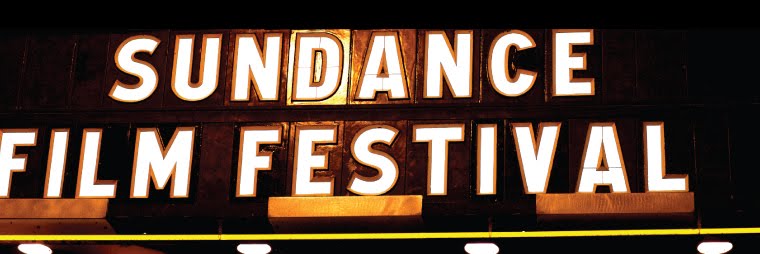Director: Goran Hugo Olsson
Producer: Danny Glover
Summary
The film is a composite of 16mm footage shot from 1967-1975 by Swedish Journalists interested in the American Civil Rights movement, specifically focusing on Harlem. (Newman “Sundance Review”).
The film “attempts to contextualizes the movement, at home and abroad, highlight its successes and failures, and note its importance today; it wants to raise awareness and reignite penetrating discussion on the movement, by introducing it to a new global generation, in a format that may be more accessible to them – the concept we call the “mixtape,” hence the title” (Tambay “Sundance 2011”) Another important thing to point out is that one of the objectives of this film was to show the Swedish perspective—their innocence in the presentation of the material with their POV being free from the kind of baggage that is usually associated with the subject matter (Tambay “Sundance 2011”). They were not as emotionally invested as Americans but it is a way to show the events that were happening at the time without a personal, national, bias of being in the middle of all the events.
“Most of it concentrates on what were considered the more radical elements of the Black Power movement: Stokely Carmichael’s SNCC, The Black Panthers and Angela Davis. Their speeches give an illuminating picture for those to young remember of how deeply divisive the country was over racial issues in the last '60s and early '70s.
Olsson presents the footage by year and attempts to give it some context and perspective by bringing in voice overs by some of the people included in the original footage, such as Davis, as well as many current-day conscious hip-hop artists like Talib Kweli or Erykah Badu.” (Newman “Sundance Review”)
Narration/Voice Over
The film was narrated by modern-day voices, but those people were never shown onscreen. The director commented in a live Q&A, after the screening, about why he chose this style of narration; he said that he didn’t want to do a testimonial from those people, he just wanted a voice.
Interviews
Some of the audio interviews were from: Stokely Carmichael/Kwame Ture, Eldridge Cleaver, Bobby Seale, Huey P. Newton, Harry Belafonte and an incarcerated Angela Davis. (Tambay “Sundance 2011”)
Editing
The film was put together to try to tell a brief story about Black Americans in Harlem and the footage they had was very sporadic. The challenge would seem to be, using all the various pieces to make one cohesive and linear story. One of the tools that helped the film transition from different events was posting the year between segments.
Music Summary
The music for the film included songs from back in the day; such as: Jackson 5’s “Rockin’ Robin. But it also featured music by Roots “Unwritten” from back in 2008—sung by Mercedes Martinez (Newman “Sundance Review”). Also the “content-enhancing hip soundtrack, created by Questlove and music producer Corey Smyth (once manager for De La Soul and Mos Def), creates a mosaic that re-energizes the soul. It’s enlightening, inspiring, and even capable of inciting this new generation, to similar acts of rebellion, all in the name of progressive change” (Newman “Sundance Review”). The choice of this music was effective in creating emotion with lyrics like “When I think about perfect times I think about yesterday/You can ask me about the future and I don’t know what to day” (Newman “Sundance Review”).
Audience Response
My personal response was that this was a different look at some of the events of the civil rights movement. The Black Panthers, Angela Davis, and Stokely Carmichael were not familiar to me prior to this movie; normally when I see films about the civil rights movement it’s about protesting, non-violence, and Dr.King. I appreciated the new perspective and issues it focused on. I had never seen the more violent side, more specifically the drugs, the Panthers and the legal system.
My one critique of this film is that I wished it would have shown the people who were narrating or being interviewed. Also, even though I found this film to be interesting and enlightening me to other events that I wasn’t aware of, I didn’t have as an emotional response as other movies that were seen especially Sing Your Song . For me it was missing that dramatic emotional factor, I don’t know precisely what it was but there was something lacking for me.
Works Cited
Newman, Melinda. “Sundance Review: ‘The Black Power Mixtape 1967-1975’”Hitfix. n.p. 22 Jan. 2011. Web. 4 Feb. 2011.
Olsson, Goran Hugo. Sundace Film Festival. Broadway Center Theater, Salt Lake City, UT. 29 Jan. 2011. Q&A.
Tambay. “Sundance 2011- ‘The Black Power Mixtape 1967-1975’ Review.” Shadow and Act. n.p. 29 Jan. 2011. Web. 4 Feb. 2011.
Busacca, Lary. "The Black Power Mixtape 1967-7975" Portraits - 2011 Sundance Film Festival. 21 Jan 2011. Getty Images North America. Zimbo. Web. 7 Feb. 2011.


Emily--nice work here. I'm wondering about the Harlem assertions. I know we had to tour bus going into a Harlem neighborhood, but the Black Panthers started in California (Oakland and Berkeley) and even marched on the California State capital with guns (speaking of direct action!). So I wanted you to check or be sure of your sources on that bit of information. Some of those 'tapes' might have been shot in California, not New York.
ReplyDelete